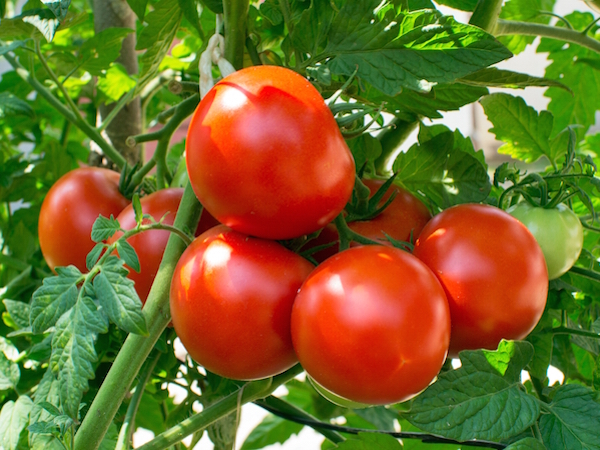Your cart is currently empty!

Beefsteak Tomato Growing Tips

If you want to grow a beefsteak tomato that produces big fruits, you need to know some basic growing tips. With these tricks, you can get big tomatoes and enjoy all summer long!
Beefsteak tomatoes love to grow in nutrient-rich soil with a slightly acidic pH level of about 6.2 to 6.8. They also need full sun.
Fertilize
Beefsteak tomatoes are heavy feeders that need a fertilizer with a high potassium and phosphorus content. They also require a moderate amount of nitrogen to help the plants grow quickly and produce plenty of fruits.
They do best when planted deeper in soil rather than in containers. For this reason, it is a good idea to prepare a well-draining, rich mixture of sand and compost before planting.
As a sun-loving plant, beefsteaks need at least eight hours of direct sunlight daily to thrive. Choose a spot in your garden or inside your home that receives this much light.
To prevent tomato diseases and pests, plant disease-resistant varieties, rotate crops, keep the soil moist, and ensure adequate air circulation. You can also install row covers to discourage pests such as flea beetles and aphids from invading your tomatoes.
Cage
If you’re planning to grow beefsteak tomatoes, you’ll need to provide them with support to keep their fruit off the ground and out of the way of predators. You can use stakes, trellises or cages to help these indeterminate plants reach their full potential.
Choosing the right containers is also important for your tomato plants. Make sure that they are large enough to support the plants and prevent them from tumbling over.
When planting them, ensure that the bottom leaf is a few inches above the soil surface to encourage healthy rooting. Water them immediately after planting to moisten and settle the soil.
Pruning is also vital to beefsteak tomato plants, particularly those growing in the vining variety. Prune the plants regularly to reduce the number of main stem suckers and wild stems that outgrow their cages.
Beefsteaks are an excellent choice for growing in the garden or in pots, as they are hardy and can be grown indoors as well. They’re easy to grow, nutritious and delicious.
Pruning
One of the best-tasting garden fruits is a juicy, delicious tomato. It’s also a nutritional powerhouse, loaded with antioxidants, vitamins and minerals.
A beefsteak tomato plant will produce a large crop of these tasty, colorful vegetables if you know how to prune it properly. Pruning ensures that more of the plant’s energy is directed toward producing fruit rather than foliage and stem growth.
Using pruning shears, remove all but one or two strong upright stems. Then use your fingertips to pinch out any side suckers as they develop.
Then, near summer’s end, you should prune the plant’s central stems to a point just in front of partially formed green fruits. This will help direct the remaining plant energy into ripening these last fruits before it dies off.
When your beefsteak tomatoes have reached a healthy size, harvest them as soon as they are ripe. You should be able to eat them within a week at room temperature or two weeks refrigerated.
Water
Beefsteak tomatoes need a good amount of water to thrive and produce fruit. They require at least 1 inch of water per week, and you should water them early in the morning before it gets too hot.
You can start beefsteak tomato seeds six weeks before your average last frost date, planting them half an inch deep in moistened peat-based growing medium and placing them in a bright, sunny spot once they have germinated. Water the seedlings regularly to keep the soil moist until they are large enough to transplant into your garden.
Tomatoes are prone to several common pests and diseases, including aphids, tomato hornworms, and flea beetles. To avoid these, rotate your crop and plant disease-resistant varieties, water regularly and consistently, and ensure good air circulation and adequate soil temperature.
If you want to grow beefsteak tomatoes, you will need strong, tall cages or stakes to support their copious stems and heavy fruits. Pruning is also a must to ensure your plants grow in the right direction and produce a healthy harvest.
by
Tags: